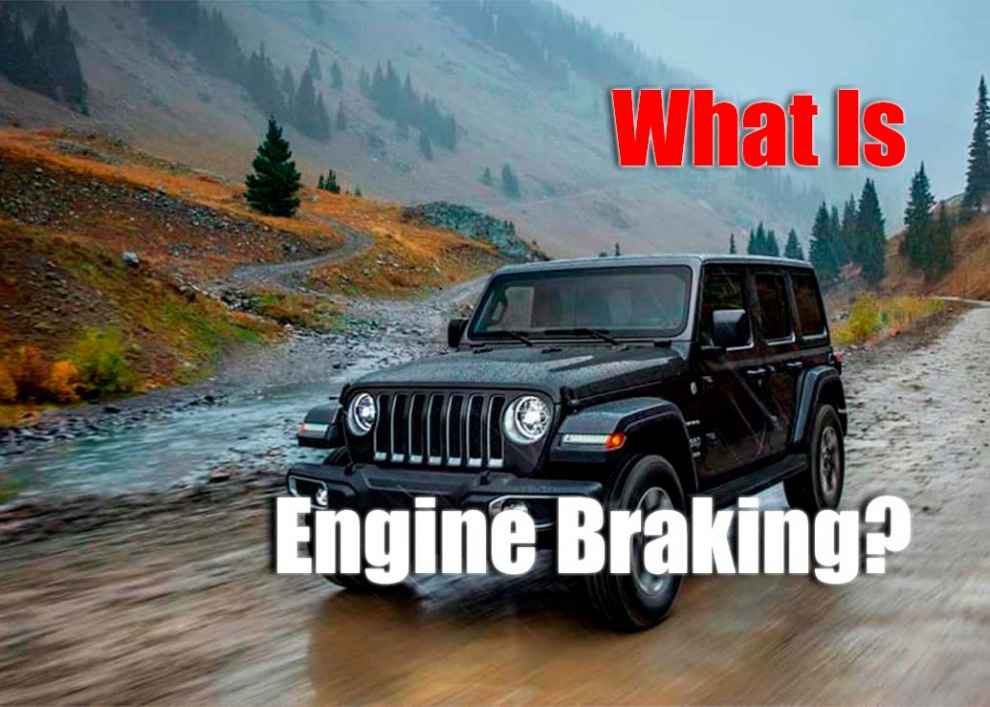Engine braking is the process of using a vehicle’s engine to slow down or stop a vehicle without the use of its brakes. It involves shifting the transmission into neutral, disengaging the engine from the wheels, and allowing them to spin freely. This technique can be useful in certain driving situations, such as descending a steep hill or maneuvering around sharp curves. However, there are some drawbacks associated with engine braking that must be taken into consideration before using it. In this article, we will discuss what engine braking is, how it works, and why it should only be used in certain scenarios. We will also look at some of its advantages and disadvantages so you can decide whether engine braking is right for you.
What Is Engine Braking?

Additionally, while engine braking is beneficial in specific scenarios, it’s essential to ensure your vehicle’s regular braking system is always in top condition. If you own a Jeep Grand Cherokee, choosing the right brake pads is vital. Best Brake Pads for Jeep Grand Cherokee provides insights into the top options available, ensuring your vehicle is safe and performs optimally.
How Does Engine Braking Work?
When using engine braking techniques, drivers shift their vehicles into neutral to use their engines’ inertia rather than traditional brakes to slow down. When shifting into neutral, the engine and wheels have no direct mechanical connection; they are connected only by gravity and friction. It causes a reaction force at each wheel and a corresponding decrease in speed. Depending on how much traction your tires have with the road surface, you may experience more or less resistance due to friction while utilizing engine braking techniques—the less traction you have with your tires, the more resistance you will experience until eventually coming to a stop if done correctly.
Advantages of Using Engine Braking
One of the main benefits of using engine braking techniques is that it can reduce the wear and tear on your vehicle’s brakes. Since traditional brakes are not being used, there is no additional strain put on them; this means they will last longer, resulting in less money spent on brake maintenance and repairs. Additionally, engine braking techniques can help slow down a car faster than traditional brakes due to the increased friction between the tires and road surface. It can be especially helpful when quick deceleration is needed, such as when navigating sharp turns or descending steep hills.
Disadvantages of Using Engine Braking
Using engine braking techniques can strain other car parts, such as the transmission and drivetrain. In some cases, this can result in increased wear and tear on these components, leading to costly repairs in the future. Additionally, knowing your vehicle’s speed and friction between your tires and the road surface is essential when using engine braking techniques. If done incorrectly or with insufficient friction, it may not be possible to slow down your vehicle; this could lead to an accident or other dangerous driving situations.
Conclusion
Engine braking is a technique that allows drivers to reduce speed or stop their vehicles without using the traditional brakes. It involves disengaging the engine from the drivetrain and allowing it to spin freely, resulting in a reaction force at each wheel and a corresponding decrease in speed. While engine braking can be beneficial in certain situations, such as when going downhill or around tight curves, it should only be used when suitable, as overuse may cause damage to other parts of your vehicle. Knowing your vehicle’s speed and friction between your tires and road surface is essential when using engine braking techniques to avoid dangerous driving situations.

Add Comment